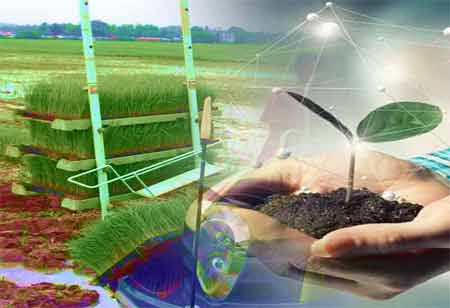THANK YOU FOR SUBSCRIBING
Be first to read the latest tech news, Industry Leader's Insights, and CIO interviews of medium and large enterprises exclusively from Food and Beverage Tech Review
Leveraging Food Automation for Enhanced Services
Food and beverage industries have been revolutionized by automation.

By
Food and Beverages Tech Review | Tuesday, February 27, 2024
Stay ahead of the industry with exclusive feature stories on the top companies, expert insights and the latest news delivered straight to your inbox. Subscribe today.
Automation generates vast amounts of data at every food production and distribution stage.
FREMONT, CA: Food and beverage industries have been revolutionized by automation. From large-scale production facilities to small-scale restaurants, automation is crucial in enhancing efficiency, improving quality, and ensuring process consistency. Production and manufacturing automation involves using machinery and robotics to streamline mixing, cooking, packaging, and labeling processes. Automated systems are programmed to perform tasks precisely and quickly, reducing human error and increasing productivity. With minimal human intervention, automated bottling lines can fill and cap thousands of bottles per hour in the beverage industry.
Automated cleaning systems use sensors and programmable algorithms to ensure that equipment and production facilities meet strict sanitation standards. These systems can automatically schedule cleaning cycles, monitor water temperature and chemical concentrations, and document cleaning procedures to comply with regulatory requirements and maintain food safety standards. Automated packaging and labeling systems can handle various packaging materials and formats, from cans and bottles to pouches and cartons. The systems can weigh, fill, seal, and label products with precision, ensuring consistency in packaging and reducing the risk of errors or contamination.
Automated systems have sensors and cameras to detect product abnormalities, such as irregular shapes, discoloration, or foreign objects. The systems ensure that only products meeting quality standards are packaged and delivered to consumers, minimizing the risk of recalls and ensuring customer satisfaction. Automation streamlines the inventory management processes by tracking stock levels in real time and automatically placing orders for raw materials when inventory levels are low. It prevents stockouts and reduces the need for manual intervention in inventory tracking and ordering processes. From warehouse management to order fulfillment and delivery, automation optimizes distribution and logistics.
Automated guided vehicles (AGVs) and robotic pick-and-place systems can efficiently move products within warehouses and distribution centers. Route optimization algorithms can minimize delivery times and reduce transportation costs. Automation extends to customer-facing processes such as online ordering, self-service kiosks, and mobile apps. The systems allow customers to place orders, customize their meals, and make payments with minimal staff involvement, improving efficiency and enhancing the overall customer experience. Advanced analytics tools and ML algorithms can optimize business processes, reduce costs, and drive innovation.
Automation provides a better use of resources and reduces waste in food production and distribution processes. Food and beverage manufacturers transform industries through automation, streamlining processes, improving quality, improving food safety, and driving innovation. Automated systems contribute to a better sustainable and environmentally friendly food supply chain by optimizing ingredient usage, reducing energy consumption, and reducing packaging waste. Automation increases the role of meeting the demand for safe, high-quality food products while minimizing costs and environmental impact. Embracing automation helps to stay competitive in the market.
I agree We use cookies on this website to enhance your user experience. By clicking any link on this page you are giving your consent for us to set cookies. More info







